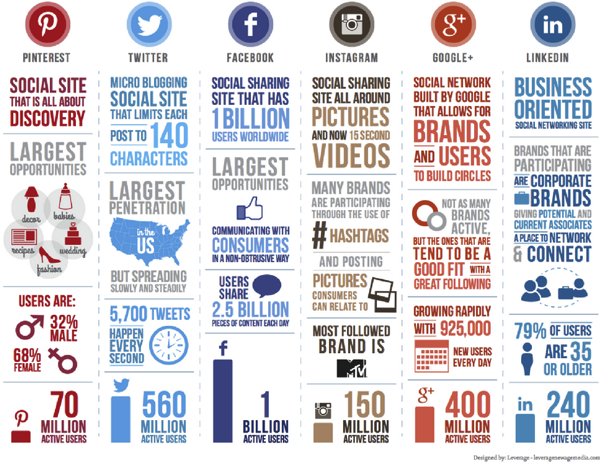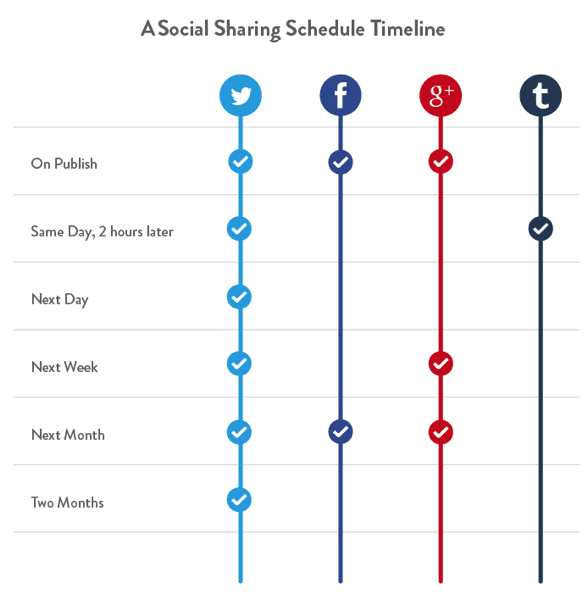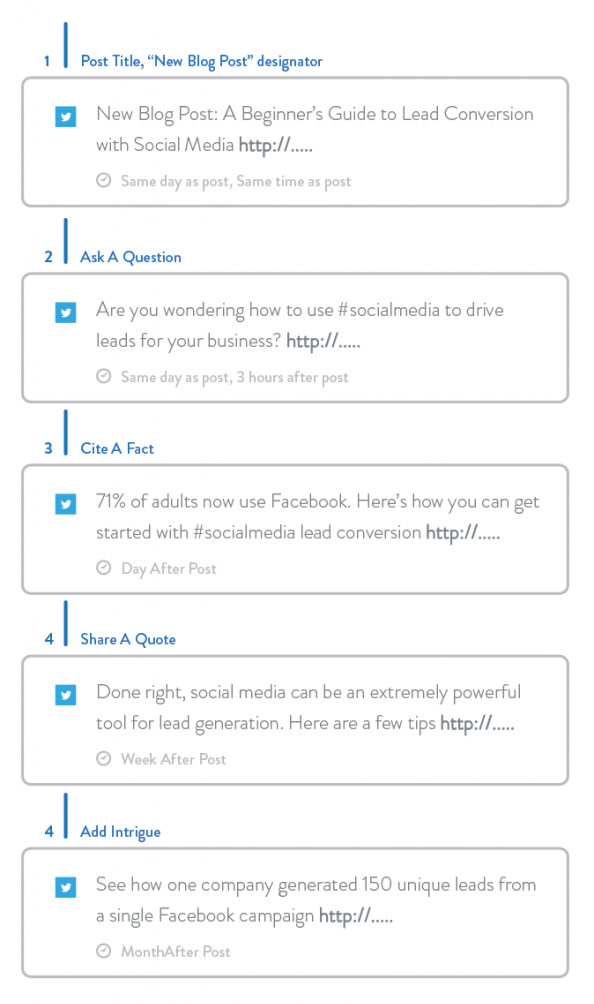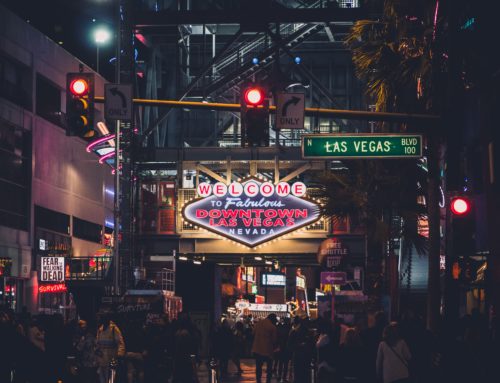Today as part of our exploration of things to do after you’ve hit publish on blog posts, I want us to take a look at the topic of ‘socializing’ our content.
Most bloggers have at least some kind of strategy in place when it comes to sharing our blog posts on social media, but it is an area that most of us also know we could improve upon.
I for one know that even after 12 months of a real concerted effort with developing a social media strategy for Digital Photography School, that there are areas I could drastically improve upon!
So today I challenge you (and me) to spend a little time doing a critical review of your approach to sharing content on social media and to choose 1-2 areas that you could improve.
Note: this post will not present a complete social strategy. Social media is useful for many things (including engaging readers, building profile, networking with others in your niche), but today we’re just focusing upon the topic of sharing/promoting the new blog posts we write.
The two main areas that I would suggest you review when it comes to thinking about socialising of your blog’s content are:
- which social networks?
- developing a rhythm of sharing
Which Social Networks?
The choice before us as bloggers as to which social networks to engage in can feel a little overwhelming. As a result I see bloggers falling into numerous traps.
Some feel so overwhelmed that they opt out altogether and don’t engage in any social media.
Others feel the need to engage in every social network and end up either burning themselves out or engaging so much on social that their blogging suffers.
Others still engage widely on lots of social media sites but spread themselves so thin that they don’t do it very well.
There’s no blueprint or formula for choosing which social media to engage in but a few questions come to mind to help you make this decision:
1. How much Time do you Have?
If you’re time-poor, choose one network to focus on primarily, but secure accounts for other networks so that if/when you do want to engage on them you’re ready to go.
If you do choose one network to engage on primarily you might also want to consider more automated sharing of your content on the other networks. For example if you choose Facebook as your primary social network, you could set up an RSS to Twitter tool that automatically tweets links to new posts on your Twitter account any time you publish.
While these automated tools don’t help you build relationships with Twitter followers, they at least get your content out there and you will find some followers appreciate them.
Example: Seth Godin’s Twitter Account is perhaps the best example of this. He follows nobody and every tweet he does is simply an update from his blog. While not engaging, every update is retweeted many times and his account is followed by over 376,000 people. Seth’s Facebook page does the same thing.
This is exactly what I did on the dPS Twitter account for more than two years before I started using that Twitter account in a more strategic way. While I knew I could use the account better, by doing the automated Tweets I did drive traffic and actually saw our Twitter numbers increase so that when I stated to use the account more intentionally, we already had a network.
If you have more time on your hands, you can of course choose to engage in more social networks. Just don’t overcommit and end up spreading yourself too thin!
2. What Social Networks are Relevant to Your Readers?
Get 10 successful bloggers from different niches in a room and ask them which social networks are best for driving traffic to their blogs, and you’ll get a different answer from each one as to where their readers hang out in greatest numbers.
My own two blogs are quite different. For ProBlogger I find most of my readers are engaging most on Twitter. Facebook would be second, followed by Google+ and then LinkedIn.
On Digital Photography School, Facebook is king. Twitter and Google+ would be numbers two and three, and Pinterest would also be close.
This of course changes over time as new networks emerge, so keep assessing it and find ways to find out where your readers hang out (I run annual surveys on my blogs to get this data).
3. What Social Networks are Relevant to Your Content
In addition to assessing where your readers hang out, think about the type of content you produce because it may be more suited to one network than others.
For example, on Digital Photography School our content is very visual. While most social networks these days allow you to share visual content, each network is slightly different in how you can present it.
For example, Twitter limits how much you can write (140 characters), Facebook lets you write more and present multiple images in an update, Google+ allows you to write as much as you want and embeds video and images nicely. Pinterest is obviously great for visual content.
4. Where are Your Competitors?
I’m not a big fan of looking at other bloggers as ‘competitors’ (learning to see other bloggers as potential allies is a powerful thing) but doing some analysis of what others are doing is useful in making decisions.
Firstly it can help you work out where your potential readers are if you see all other bloggers in your niche doing well in one particular network) but also you might find a gap where no other bloggers are doing anything which could present an opportunity.
While a lack of presence in a network by other bloggers might be a signal of it being a place where there’s no traction you might find doing some experiments with the network worthwhile too!
Other Factors?
Lots more could be said about choosing which network to engage in. I’d love to hear how you made the decision below.
Here’s a cool little info graphic from Leverage Media with a good breakdown of some of the main different networks and their advantages:

Develop a Rhythm of Sharing
Once you’ve done some analysis on which networks to build a presence on, the question becomes HOW to share content on those networks.
One of the things that I’d highly recommend you ponder when it comes to this is to think about developing a rhythm to your sharing.
Let me illustrate the power of rhythm with a snippet from an email from one of my readers at dPS that I received a few weeks back. The email came in on a day I’d been sick and had missed scheduling a couple of status updates to Facebook.
“Dear dPS team. I just wanted to check if everything was ok with you? I noticed that your 6am and 11am Facebook updates didn’t go out today. I miss them! – Susan”
That email made me so happy and illustrated to me the power of developing a rhythm to social media updates. Not only had Susan noticed I’d not made a couple of updates, she’d actually noticed that I published updates at the same time every day – something I thought only I’d noticed!
Over the last year I’ve slowly developed a rhythm of posting to the dPS Facebook page (I wrote a little about it here). I usually post five times a day to our page and have assigned times to when I want each post to go live. The reason I came up with the times was to help me space out my posts during the times that most of my readers are online – but also to help me be more disciplined with posting.
I’d never have guessed that my readers would begin to notice when we updated – and that some would even be looking out for those updates at those times!
While I’m sure most of our readers don’t notice the exact timing of our updates they do notice if we go missing for a day or if we post too much in a 24-hour period. Regularity and rhythm are a powerful thing.
So what rhythm will you develop to your social media sharing of your content?
For me it is quite different from social media network to network. While Facebook is five times a day, I try to hit a higher rate of sharing on the dPS Twitter account (I’m aiming for 10-15 posts a day there). On our Pinterest account, Jade (our Pinterest magician) aims for around 12-15 pins per day – scattered through the day.
Of course not all of our Pins, tweets and updates are sharing of our new content – we ask questions, share other people’s posts as well as resharing some of the content in our archives – but developing a rhythm is important.
Of course the other thing to consider within this rhythm is how often you’ll share the same piece of content?
Different bloggers have quite different approaches to this.
I recently shared this Kissmetrics graphic that suggests a starting point for social sharing of the same piece of content.

My own approach is less aggressive than this as I rarely reshare anything on social more than once within even a week or so – unless it is a post that is going very well for some reason. Having said this, at dPS we publish 14 posts per week, so there’s always something fresh to share and with over 4500 posts in the archives there is no shortage of good evergreen content to share on any given day alongside our new stuff.
There is no right or wrong answer to how often you can share content on social media but do keep in mind these two factors:
- each social network is different – for example on Twitter you can probably get away with sharing the same content more times as tweets don’t have as long a life as on other networks.
- pay attention to the reaction of your audience to your updates – there does come a point where those who follow you will begin to disengage with you if you share the same stuff over and over. Sometimes they’ll tell you if you’re sharing too much but most times I suspect they simply stop following you or at least become a little blind to your updates. Tread carefully!
If you do decide to share the same piece of content multiple times try to mix up the messaging of your sharing.
Again from the same Kissmetrics post mentioned above comes this great graphic to illustrate 5 different ways of sharing the same content on Twitter:

Dan Zarella has found that tweets with images are 60% more likely to be retweeted (we definitely see this on dPS, in fact last time I looked it was 100-200% more likely). The same is true on other social networks – images are powerful!
Of course the other thing to do when you’re resharing the same piece of content is to mix up the timings of your updates. If you first tweet a piece of content at 9am – at least wait a few hours to reshare it so that others in different parts of the world are likely to be online. The same thing applies to other networks (although I’d wait longer than a few hours to reshare on networks like Facebook or Google+).
Also consider avoiding sharing during those times of the day that are particularly ‘noisy’. Sometimes sharing during times that you’d think your audience isn’t online is actually best. Dan Zarrella calls this ‘contra-competitive timing’ and has some great data on the topic here.
There are so many factors to consider when writing posts, but hitting “publish” shouldn’t signal the time to stop thinking about them. Where can they go, and how can you promote them for maximum results? I hope these tips and the ones we will introduce across the week will help you shape the best social strategy for your situation.
Source: http://www.problogger.net/archives/2014/06/02/theme-week-how-to-socialize-your-post-for-maximum-effect/





Leave A Comment